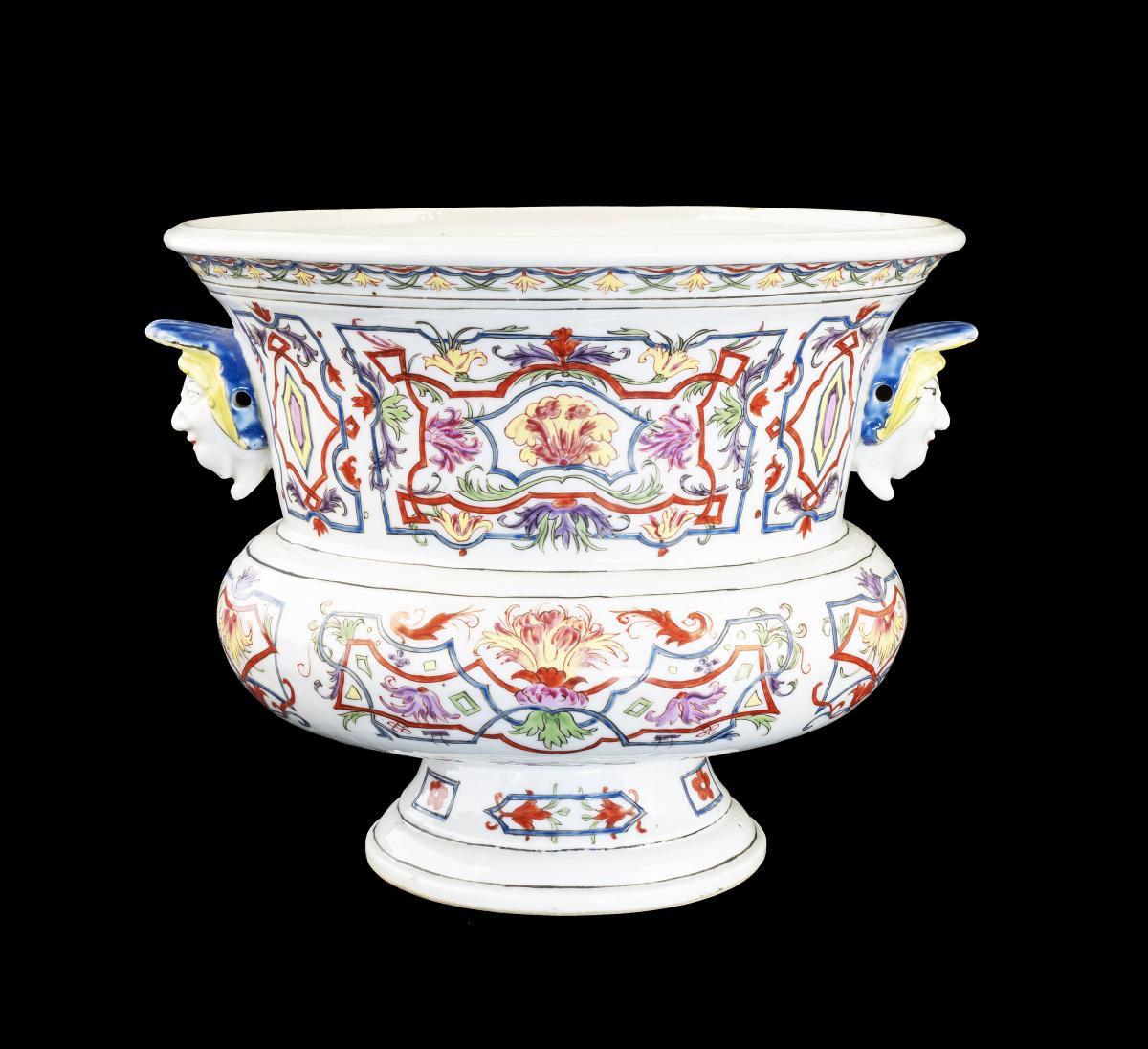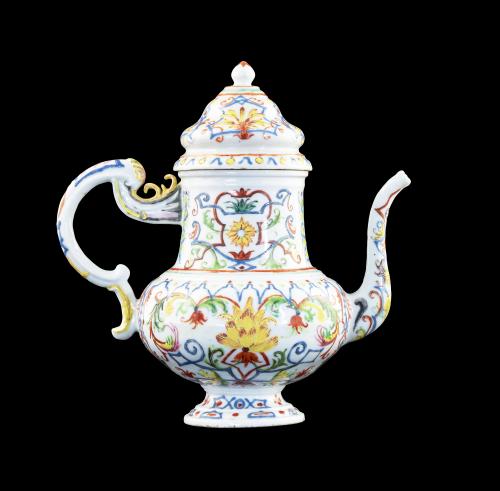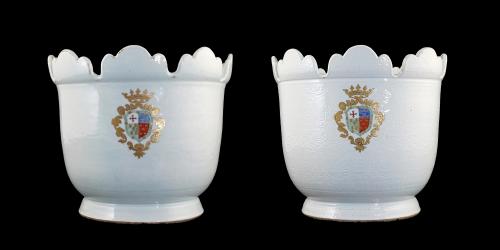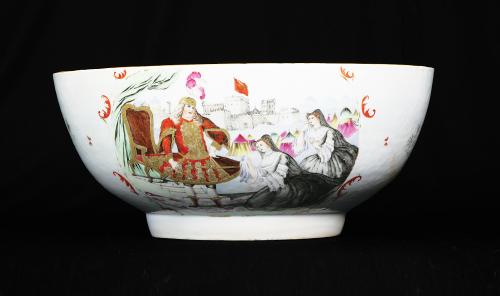

Price on application
This object is eligible for a Certificate of BADA Provenance
The BADA Standard
- Since 1918, BADA has been the leading association for the antiques and fine art trade
- Members are elected for their knowledge, integrity and quality of stock
- Our clients are protected by BADA’s code of conduct
- Our dealers’ membership is reviewed and renewed annually
- Bada.org is a non-profit site: clients deal directly with members and they pay no hidden fees
Chinese export porcelain wine cooler with famille rose decoration.
Qianlong period circa 1740.
Portuguese Market.
Height: 8.25 inches; 21cm.
Provenance: the Collection of Leo & Doris Hodroff; with Cohen & Cohen 2001.
A rare Chinese porcelain winecooler of thistle shape with everted rim flanked by bearded mask handles, on a raised flared foot, decorated all round with bright famille rose strapwork and arabesques.
This appears to be the only example of this form recorded in Chinese export porcelain. It belongs to a small group of similar porcelains with the same decoration and elaborate shapes, probably modelled after silver, and having the same mask handles. The decoration is inspired by porcelain from the Vezzi factory.
A tureen cover and stand in the Medeiros e Almeida collection Lisbon has these handles, as does a small footed ecuelle. A service for the Bishop of Oporto, D. Jose Ribeiro da Fonseca Figuereda e Sousa has very similar designs. A pair of tazze and a coffee service also relate to this group.
The Vezzi factory was set up in Venice in 1720 by the goldsmiths Franceso and Guiseppe Vezzi, enterprising businessmen and early practioners of the art of industrial espionage. Francesco had visited Vienna in 1719 and very likely made contact with
Christophe Conrad Hunger an assistant in the Viennese porcelain workshops of Claude du Paquier. In 1721 Hunger moved to Venice and assisted the Vezzi brothers with their enterprise, using kaolin smuggled from Aue in Germany.
The Vezzi production of porcelain only lasted until 1727, with less than two hundred pieces surviving, mostly teapots, many with chinoiserie designs.
As well as techniques for the manufacture of hard-paste porcelain Hunger’s defection also meant that the decorative style of Vezzi porcelains (and also this piece) was strongly influenced by the patterns of Du Paquier. They also appear to be influenced by the strap work designs of Jean Berain and the post-renaissance decorative friezes found on much Venetian furniture and frescoes.
References: Buerdeley, Michel (1962), p83, tureen, cover and stand in similar decoration; Castro, N (1988), p87, three services with the arms of the Bishop of Oporto; Le Corbeiller, Clare (1973) a general discussion of these pieces; Cohen & Cohen 2001, p14-15 Nos 9, a pair of tazze with similar decoration, and No 10 this winecooler.
Stock number
6856The BADA Standard
- Since 1918, BADA has been the leading association for the antiques and fine art trade
- Members are elected for their knowledge, integrity and quality of stock
- Our clients are protected by BADA’s code of conduct
- Our dealers’ membership is reviewed and renewed annually
- Bada.org is a non-profit site: clients deal directly with members and they pay no hidden fees




